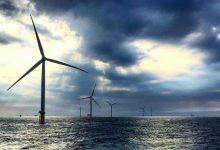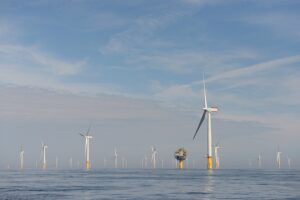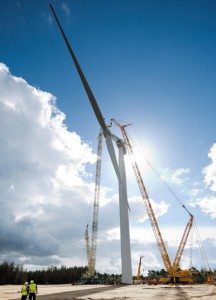The global offshore wind industry installed an impressive and record 6.1GW of new capacity in 2019, a rise of more than one third and bringing the global total up to 29GW, according to the latest official figures from the Global Wind Energy Council (GWEC).
Europe remained the planet’s largest market for offshore wind, accounting for 59% of all new installations in 2019, while the Asia Pacific region accounted for the remaining 41% – there being only two global markets with any offshore wind capacity installed.
Despite Europe’s dominance, China was nevertheless again the leader in new offshore wind installations in 2019, installing more than 2.3GW of capacity. The United Kingdom came in second with 1.8GW of newly installed capacity, with Germany in third with 1.1GW of new capacity. All other new capacity figures were below 400MW, with Denmark installing 374MW all the way down to 3MW installed off the coast of Japan.
“In 2019, we continued to see the strong growth trend of offshore wind, which now makes up 10% of total wind energy installations,” said Ben Backwell, CEO at GWEC.
“While mature markets in Europe continue to account for the majority of these installations, Asia Pacific is now increasingly contributing to this growth, with China leading the way as the global offshore wind leader in new capacity. It is also exciting to see floating wind capacity being installed in 2019, as once this technology reaches industrial scale, it will open up whole new markets and opportunities for offshore wind”.
“Offshore wind is a huge opportunity to meet our climate targets, as it can replace expensive imported fuels, provide clean energy solutions to countries that have limited for land availability, and supply increasingly competitive zero-carbon energy at a massive scale.
The economic benefits of offshore wind cannot be understated, with the potential to generate of hundreds of billions of dollars in investments, create tens of thousands of jobs and build a supply chain that can all contribute to thriving local economies.”
Looking forward, GWEC expects the growth in offshore wind to continue accelerating, with an additional 50GW of new offshore wind capacity on the horizon by 2024, if the right policies and government support is provided, and as more countries discover the technology is increasingly cost-competitive with traditional wind and other renewable energy technologies.
“While 2019 offshore wind installations were driven by established market leaders, over the next few years we will see more and more countries establish their offshore industry, expanding into new markets in Europe, the US and Asia Pacific,” Alastair Dutton, Chair of GWEC’s Global Offshore Wind Task Force said.
“As these new markets are established, this will further drive the exponential growth of the global offshore wind industry. We need to focus now on getting the right policy frameworks set up in these emerging markets to facilitate this growth and pave the way for a wider global build-out of capacity post-2030.”












